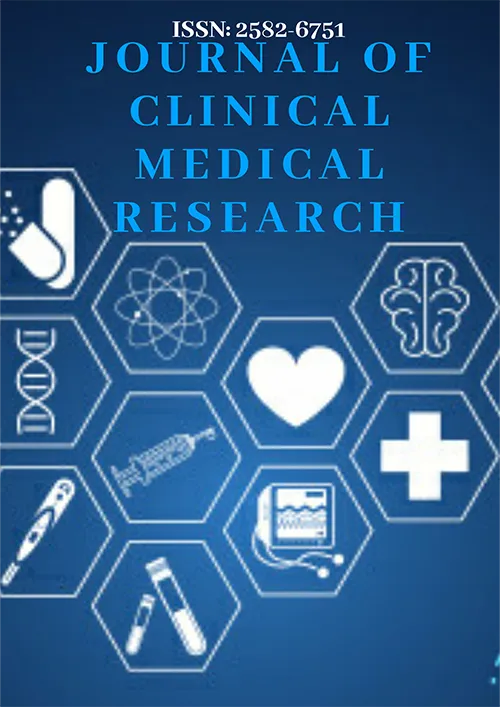Review Article | Vol. 5, Issue 3 | Journal of Clinical Medical Research | Open Access DOI : |
Virtual Graduate Medical Education (VGME) for Primary and Emergency Care Trainees: A Review and Meta-Analysis
Akshi Talwar1




1Consultant Cardiac Anaesthesia and Critical Care, Paras Hospitals, Panchkula, India
2Assistant Professor, Anaesthesia Department, JIET Medical College and Hospital, Jodhpur, India
3Assistant Professor, Hospital Administrations, GMCH Amritsar, India
4Senior Resident, AIIMS Rae Bareli, India
5Deputy Medical Superintendent and Hospital Administrator, AIIMS Rishikesh, India
*Correspondence author: Yatin Talwar, Deputy Medical Superintendent and Hospital Administrator, AIIMS Rishikesh, India;
Email: [email protected]
Copyright© 2024 by Talwar A, et al. All rights reserved. This is an open access article distributed under the terms of the Creative Commons Attribution License, which permits unrestricted use, distribution, and reproduction in any medium, provided the original author and source are credited.
Citation: Talwar A, et al. Virtual Graduate Medical Education (VGME) for Primary and Emergency Care Trainees: A Review and Meta-Analysis. Jour Clin Med Res. 2024;5(3):1-9.
| Received 03 December, 2024 | Accepted 23 December, 2024 | Published 31 December, 2024 |
Abstract
Growing demand for healthcare trainees with a global perspective and the ability to navigate different systems of healthcare has increased due to the globalization of healthcare. A potential solution to this problem is Virtual Graduate Medical Education (VGME), which makes use of internet platforms to provide global research and educational opportunities. The purpose of this systematic review and meta-analysis was to assess how well VGME programs work to improve the attitudes, knowledge and abilities of trainees in primary and emergency care. After a thorough search of electronic resources, nine studies that satisfied the inclusion requirements were found. Standardized techniques for data extraction and analysis were applied to the chosen research and a meta-analysis was carried out to quantitatively aggregate the findings. The review’s conclusions consistently showed that VGME has favorable effects. Participants in VGME programs saw a considerable increase in their comprehension of cultural settings, various healthcare systems and global health challenges. Furthermore, VGME promoted the development of critical abilities in a variety of contexts, including research, communication, cultural competency and patient-centered care. The difficulties and encounters had in global virtual environments also aided in the development of the individual and the professional. The study did note many drawbacks using VGME, such as the length of the course and time zone disparities, low learner enthusiasm and participation and connectivity problems. It is crucial to solve these issues and include VGME programs into current graduate medical school curriculum in order to optimize the advantages of VGME. To sum up, the present systematic review offers strong evidence for the efficaciousness of VGME in augmenting the knowledge, competencies and dispositions of trainees in primary and emergency care. Future healthcare professionals can benefit greatly from VGME’s assistance in preparing for the opportunities and challenges of a globalized society by addressing the challenges that have been recognized and streamlining program design.
Keywords: Virtual Graduate Medical Education (VGME); Global Health; Global Competency; Cultural Competency; Interprofessional Collaboration; Systematic Review; Meta-Analysis
Introduction
Globalization, with its difficulties and benefits, is causing a fundamental transformation in the healthcare industry. “Primary and emergency care are critical pillars in this evolving landscape, serving as the first point of contact for individuals and communities navigating complex healthcare systems” [1]. Preparing Graduate Medical Education (GME) trainees for this dynamic environment necessitates a paradigm change that provides them with the information, skills and agility needed to survive in a global primary and emergency care context [2,3]. Medical education is no longer limited to national borders or specific specialties. Healthcare difficulties now transcend geographical boundaries, affecting communities with diverse cultural origins, resource restrictions and disease burdens. For example, the COVID-19 pandemic starkly showed the interconnectedness of world health, illustrating how minor epidemics may quickly escalate into catastrophic events worldwide. “Similarly, increased antibiotic resistance, new infectious illnesses and the growing frequency of chronic ailments necessitate a worldwide approach to effective care and prevention” [1,4]. In light of these realities, primary and emergency care have emerged as front-line battlegrounds. Primary care doctors, who act as patient advocates and healthcare system gatekeepers, must have a thorough understanding of persons and communities, including socioeconomic determinants of health, cultural nuances and clinical abilities. Meanwhile, emergency medicine specialists face the challenging task of providing timely and high-quality care in typically chaotic and resource-constrained environments, often to diverse populations with varying degrees of healthcare understanding and access [1,2]. Globalization has fundamentally altered the healthcare scene, bringing with it both difficulties and opportunity. Primary and emergency care, as the primary points of contact for patients, are crucial in this changing context. Preparing Graduate Medical Education (GME) trainees for this dynamic environment whether through a mixed mode of teaching following the COVID-19 pandemic, where in-person GME activities were replaced by Virtual Health Education (VGME) or through traditional methods of internship and classroom teaching, necessitates a shift in perspective to equip them with the knowledge, skills and adaptability to thrive in a globalized primary and emergency care setting [5]. In light of these realities, primary and emergency care have emerged as frontline battlegrounds. Primary care doctors, who act as patient advocates and healthcare system gatekeepers, must have a thorough understanding of persons and communities, including socioeconomic determinants of health, cultural nuances and clinical abilities. Meanwhile, emergency medicine specialists face the challenging task of providing timely and high-quality care in typically chaotic and resource-constrained environments, often to diverse populations with varying degrees of healthcare understanding and access [1,2]. The current practices have fundamentally altered the healthcare scene, bringing with it both difficulties and opportunities. Primary and emergency care, as the primary points of contact for patients, are crucial in this changing context. Preparing Graduate Medical Education (GME) trainees either by mixed form of education following COVID-19 in which in-person GME activities were replaced by Virtual Health Education (VGME) or through traditional methods of internship and classroom teaching, necessitates a shift in perspective to equip them with the knowledge, skills and adaptability to thrive in a globalized primary and emergency care setting [5,6,7]. Internationalization, one of today’s most important issues in higher education, provides medical schools with both a huge problem and an opportunity. Internationalization is encouraged by (1) globalization of health care delivery, (2) government pressures, (3) improved communication channels, (4) the development of a common vocabulary, (5) outcome-based education and standards, (6) staff development initiatives and (7) competitiveness and commercialization. A three-dimensional approach that focuses on the student (local or international), the instructor (local or international) and the curriculum (local, imported or international) offers a range of perspectives on international medical education [2]. Other important GME approaches include a variety of critical strategies that may be applied in current medical education. These include: 1) Building global competence; 2) Knowledge of global health issues along with cultural and socio-economic; 3) Familiarity with diverse health systems and training in cultural sensitivity, communication skills and the ability to provide patient-centred care within diverse cultural contexts is essential these all can lead to fostering interprofessional collaborations and practice amongst primary care, emergency medicine and other specialities [6-18]. Further, International exchange programs and collaborative research may help to expose trainees to diverse healthcare models and build global networks [13,15,19].
Ethical Statement
The project did not meet the definition of human subject research under the purview of the IRB according to federal regulations and therefore was exempt.
Material and Methods
The study was a Systematic review and meta-analysis. Electronic databases PubMed, MEDLINE, COCHRANE, PROQUEST and EMBASE were searched from 2016 to 2022, using a comprehensive search strategy combining relevant keywords and Medical Subject Headings (MeSH) terms. Keywords used for searching the articles were: (“Graduate Medical Education”[MeSH] OR “Residency”[MeSH] OR “Fellowship” [MeSH]), (“International Research”[MeSH] OR “International Exchange”[MeSH] OR “Global Health”[MeSH]), (“Primary Care”[MeSH] OR “Emergency Medicine”[MeSH]), (“Benefits” OR “Outcomes” OR “Impact”). Preferred Reporting Items for Systematic Review and Meta-Analysis (PRISMA) was used to perform the systematic review. Ethical approval was not required for our review.
Inclusion Criteria
Studies published in the English language. Peer-reviewed original research articles were done to evaluate the benefits of virtual education in international research or learning experiences for primary care or emergency medicine trainees and report quantitative data on outcomes related to knowledge, skills, attitudes or clinical practice. Only studies lasting for one year or more and finished after 2017-18 were eligible for the study.
Exclusion Criteria
Reviews, case reports, editorials, commentaries, abstracts or conference proceedings, studies not focusing on GME trainees or primary/emergency care specialties, Studies not reporting original data or outcomes related to the research question, Studies published in languages other than English and articles published in grey literature.
Data Extraction and Analysis
Two independent reviewers screened titles and abstracts of identified studies according to the inclusion/exclusion criteria. Full-text articles of potentially eligible studies were then retrieved and assessed for eligibility. Disagreements were resolved through consensus or by consulting a third reviewer. Data from eligible studies were extracted using a standardized form, including study design, population, intervention, outcomes and results. Extracted selection data were synthesized using a narrative approach and, where possible, a meta-analysis was conducted to quantitatively pool results across studies. The methodological quality of the included studies was assessed using appropriate tools, such as the Newcastle-Ottawa Quality Assessment Scale Statistical.
Statistical Analysis
For quantitative outcomes, where appropriate, a meta-analysis was conducted using a random-effects model to account for potential heterogeneity between studies. Heterogeneity was assessed using the I² statistic test. Publication bias was assessed using funnel plots and Egger’s regression test. Statistical analyses were performed using Stata statistical software (version 17; StataCorp, College Station, TX, USA). Sensitivity Analysis during the study was planned to assess the robustness of the findings by excluding studies with low methodological quality or outlier results. Article selection Taking inclusion and exclusion criteria into account, out of 239 papers identified through databases 157 types of research were removed due to duplicity of research and other inadequacies seen due to nonfulfillment of inclusion criteria, 51 researches were screened out due to the exclusion criteria and 22 researches were excluded due to other reasons (short duration/ irregular frequency/ paid education activity) In total 9 researches were included for the final analysis (Fig. 1).
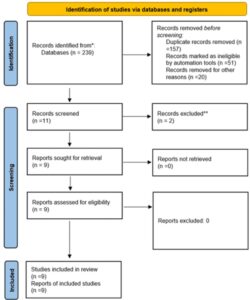
Figure 1: PRISMA flow diagram to show results of searches.
Individual studies were assessed for bias using the revised Cochrane criteria (RoB 2.0; Higgins, et al., 2019). Each study was assessed on the following criteria: selection bias, performance bias, detection bias, attrition bias, reporting bias and other bias. Each criteria was graded on a three-point scale (high risk of bias, low risk of bias and unclear) and each study was given an overall rating. If two or more of the six factors were assessed as high, the study was classified as high risk, else the study was classified as having a low risk of bias. The summary has been attached as Table 1.

Table 1: Quality and risk of bias of the included studies using Cochrane risk of bias tool.
Observations
The selected articles were analysed and information was extracted from the articles. Article and details of the virtual activity is summarized as Table 2.
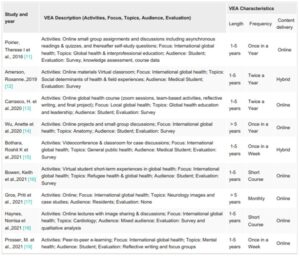
Table 2: Activity and details of the virtual activity.
Results and Discussion
The 9 (nine) included articles had VGME and satisfied the inclusion criteria, these were done in 5 (23%) lowand middle-income group countries and remaining were from 17 (77%) High income countries. Most papers had discussed the barriers in using and implementing (99%) 174 VGME in the graduate medical education. Further causes for encouragement of such activities was summarized form the study. It was found that the cost effectiveness of the course 88% followed by the course content 77% were majority of the factors that were responsible for success of the VGME [12-16,19]. Other important contributors that promote the VGME were ease and flexibility of the course and uniformity learning to all students being imparted at different points of time. Since all reputable organizations were conducting these VGME hence it scored minimum 44% as the reason for choosing VGME. Other minor factors promoting the VGME were access to wider training and global platforms and real-world applicability. The percentages of reasons for choosing VGME has been summarized in Fig. 2.
Barriers and challenges faced during VGME It was observed that duration of the course 55% was a major challenge encountered during VGMEs followed by different time zones for live lectures 44%. Lack of interest of the graduate and the trainee 33% was observed as a challenge by most of the studies. The least encountered challenge were connectivity issues 22% followed by poor course reach and lack of in person activity and absence of credit hours. Overall, more than 67% of the included articles cited a positive impact of VGME on the trainees and medical graduates which was much more than the original expected values [12,13,15,16,18]. Newcastle Ottawa quality assessment was derived as of fair quality with the analysis getting 2 stars in selection domain, one star in comparability and 2 stars in outcomes. The barriers and challenges have been summarized in Fig. 3.
The majority of papers (77%, 7/9) addressed issues like global health education, community health and primary health), while 32% (3/9) addressed issues related to a medical specialty (e.g. anaesthesia, anatomical aspects and surgical training) [14,16,18]. It was observed most publications (90%, 8/9) concentrated on primary health and associated learning pertinent to community health. Knowledge and understanding: International research and learning experiences significantly increase knowledge and understanding of global health issues and diverse healthcare systems across all studies. The majority of papers (90%,) addressed VGME evaluations [14-18]. Participant surveys constituted the most often mentioned assessment technique (57% of the articles). The various outcomes that were considered, were satisfaction with course, content or training (60%) and self-reported increase in knowledge or skills (40%) [12,13]. However, comprehensive evaluations of techniques were not a regular characteristic of all of the included studies. Because of the significant degree of heterogeneity (I2 = 74%), we utilized the random effects model rather than the fixed effects model. This variation may be related to changes in VGME course contents, target audience and/or discrepancies in defining the outcome variable and measuring technique utilized. Researchers further built a funnel plot to measure publication bias (Fig. 4); however, with only nine studies, this is challenging to interpret. A visual examination of the funnel plot reveals no clear indication of publication bias, however, research with negative outcomes may be lacking due to the paucity of studies in the lower left end of the figure. This is difficult to judge due to the small number of published researches.
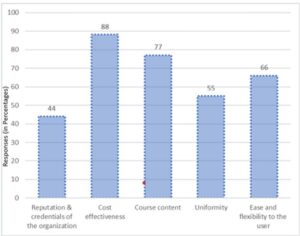
Figure 2: Reasons for accepting VGME.
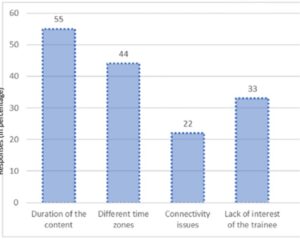
Figure 3: Barriers and challenges faced during VGME.
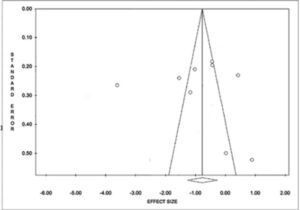
Figure 4: Funnel plot to measure publication bias.
Strengths and Limitations
This study is probably the first comprehensive systematic review and meta-analysis to assess the benefits of international research and learning in VGME for primary and emergency care trainees. The use of a rigorous search strategy, standardized data extraction and analysis methods and meta-analysis will strengthen the study’s internal and external validity. However, limitations include potential publication bias and the generalizability of findings to specific VGME programs and healthcare settings. There are a number of limitations to this systematic review. First, the number of studies included in the review was relatively small. Second, the quality of the studies was variable. Third, the studies were conducted in a variety of settings, which may have affected the findings.
Conclusion
This systematic review provides evidence that international research and learning can provide several benefits for trainees. These benefits include improved clinical skills, enhanced research skills, increased cultural competency and personal growth and development. The findings of this review have implications for practice and policy and suggest that more research is needed to investigate the benefits of international research and learning in VGME further. By implementing these strategies, these modules and programs can empower future primary and emergency care providers to become agents of change in the globalized healthcare landscape. With a strong foundation in global competence, interprofessional collaboration and technological fluency, they will be prepared to navigate the complex challenges and opportunities of this interconnected world, delivering high-quality care to diverse populations and contributing to a healthier future for all. The reviewed studies provide compelling evidence for the benefits of international research and learning experiences in enhancing the knowledge, skills and attitudes of VGME trainees in primary and emergency care. Integrating such experiences into the curriculum offers promising avenues to equip future healthcare professionals for the challenges and opportunities of a globalized healthcare landscape. The enhanced research skills are likely due to the exposure to different research methodologies and cultures that trainees may encounter in an international setting. The increased cultural competency is likely due to the exposure to different cultures that trainees may encounter in an international setting. The personal growth and development are likely due to the challenges and experiences that trainees may encounter in an international setting.
Conflict of Interest
The authors declared no potential conflicts of interest with respect to the research, authorship and/or publication of this article.
Acknowledgement
Acknowledge those who provided technical support during the study.
Consent to Participate
Informed consent was obtained from each participant prior to specimen collection.
Financial Disclosure
This research did not receive any grant from funding agencies in the public, commercial or not-for-profit sectors.
Data Availability
Data is available for the journal. Informed consents were not necessary for this paper.
Author’s Contribution
The authors contributed equally.
References
- Blinkenberg J, Pahlavanyali S, Hetlevik Ø, Sandvik H, Hunskaar S. General practitioners’ and out-of-hours doctors’ role as gatekeeper in emergency admissions to somatic hospitals in Norway: registry-based observational study. BMC Health Services Research. 2019;19:1-2.
- Harden RM. International medical education and future directions: a global perspective. Academic Medicine. 2006;81(12):S22-9.
- Rukadikar C, Mali S, Bajpai R, Rukadikar A, Singh AK. A review on cultural competency in medical education. J Family Medicine and Primary Care. 2022;11(8):4319-29.
- Beach MC, Price EG, Gary TL, Robinson KA, Gozu A, Palacio A, et al. Cultural competence: a systematic review of health care provider educational interventions. Medical Care. 2005;43(4):356-73.
- Marghalara R, Julie N, Jessica LF, Gordana D, Sarah E. International medical graduates’ perceptions about residency training experience: a qualitative study. Int J Medical Education. 2022;14:4-10.
- Young MJ, Bodien YG, Edlow BL. Ethical considerations in clinical trials for disorders of consciousness. Brain Sciences. 2022;12(2):211.
- Bentley CZ. Global health in medical education. Medical Science Educator. 2021;31(Suppl 1):5-8.
- Spaulding EM, Marvel FA, Jacob E, Rahman A, Hansen BR, Hanyok LA, et al. Interprofessional education and collaboration among healthcare students and professionals: a systematic review and call for action. J Interprofessional Care. 2021;35(4):612-21.
- Guitar NA, Connelly DM. A systematic review of the outcome measures used to evaluate interprofessional learning by health care professional students during clinical experiences. Evaluation and the Health Professions. 2021;44(3):293-311.
- Ambrose M, Murray L, Handoyo NE, Tunggal D, Cooling N. Learning global health: a pilot study of an online collaborative intercultural peer group activity involving medical students in Australia and Indonesia. BMC Medical Education. 2017;17:1-6.
- Poirier TI, Devraj R, Blankson F, Xin H. Interprofessional online global health course. Am J Pharmaceutical Education. 2016;80(9):155.
- Amerson R. Preparing undergraduates for the global future of health care. Annals of Global Health. 2019;85(1):1-6.
- Carrasco H, Fuentes P, Eguiluz I, Lucio-Ramírez C, Cárdenas S, Leyva Barrera IM, et al. Evaluation of a multidisciplinary global health online course in Mexico. Global Health Research and Policy. 2020;5:1-11.
- Anette Wu D, Noël GP, Wingate R, Kielstein H, Sakurai T, Viranta-Kovanen S, et al. An international partnership of 12 anatomy departments–improving global health through internationalization of medical education. Annals of Global Health. 2020;86(1):27.
- Bothara RK, Tafuna’i M, Wilkinson TJ, Desrosiers J, Jack S, Pattemore PK, et al. Global health classroom: mixed methods evaluation of an interinstitutional model for reciprocal global health learning among Samoan and New Zealand medical students. Globalization and Health. 2021;17:1-4.
- Bowen K, Barry M, Jowell A, Maddah D, Alami NH. Virtual exchange in global health: an innovative educational approach to foster socially responsible overseas collaboration. Int J Educational Technology in Higher Education. 2021;18:1-11.
- Gros P, Rotstein D, Kinach M, Chan DK, Montalban X, Freedman M, Sasikumar S. Innovation in resident education–Description of the Neurology International Residents Videoconference and Exchange (NIRVE) program. J Neurological Sciences. 2021;420:117222.
- Haynes N, Saint-Joy V, Swain J. Global health imperative to prioritizing cardiovascular education. J Am College of Cardiol. 2021;77(21):2749-53.
- Prosser M, Stephenson T, Mathur J, Enayati H, Kadie A, Abdi MM, et al. Reflective practice and transcultural psychiatry peer e-learning between Somaliland and the UK: a qualitative evaluation. BMC Med Educ. 2021;21:1-10.
Author Info
Akshi Talwar1




1Consultant Cardiac Anaesthesia and Critical Care, Paras Hospitals, Panchkula, India
2Assistant Professor, Anaesthesia Department, JIET Medical College and Hospital, Jodhpur, India
3Assistant Professor, Hospital Administrations, GMCH Amritsar, India
4Senior Resident, AIIMS Rae Bareli, India
5Deputy Medical Superintendent and Hospital Administrator, AIIMS Rishikesh, India
*Correspondence author: Yatin Talwar, Deputy Medical Superintendent and Hospital Administrator, AIIMS Rishikesh, India;
Email: [email protected]
Copyright
Akshi Talwar1




1Consultant Cardiac Anaesthesia and Critical Care, Paras Hospitals, Panchkula, India
2Assistant Professor, Anaesthesia Department, JIET Medical College and Hospital, Jodhpur, India
3Assistant Professor, Hospital Administrations, GMCH Amritsar, India
4Senior Resident, AIIMS Rae Bareli, India
5Deputy Medical Superintendent and Hospital Administrator, AIIMS Rishikesh, India
*Correspondence author: Yatin Talwar, Deputy Medical Superintendent and Hospital Administrator, AIIMS Rishikesh, India;
Email: [email protected]
Copyright© 2024 by Talwar A, et al. All rights reserved. This is an open access article distributed under the terms of the Creative Commons Attribution License, which permits unrestricted use, distribution, and reproduction in any medium, provided the original author and source are credited.
Citation
Citation: Talwar A, et al. Virtual Graduate Medical Education (VGME) for Primary and Emergency Care Trainees: A Review and Meta-Analysis. Jour Clin Med Res. 2024;5(3):1-9.

